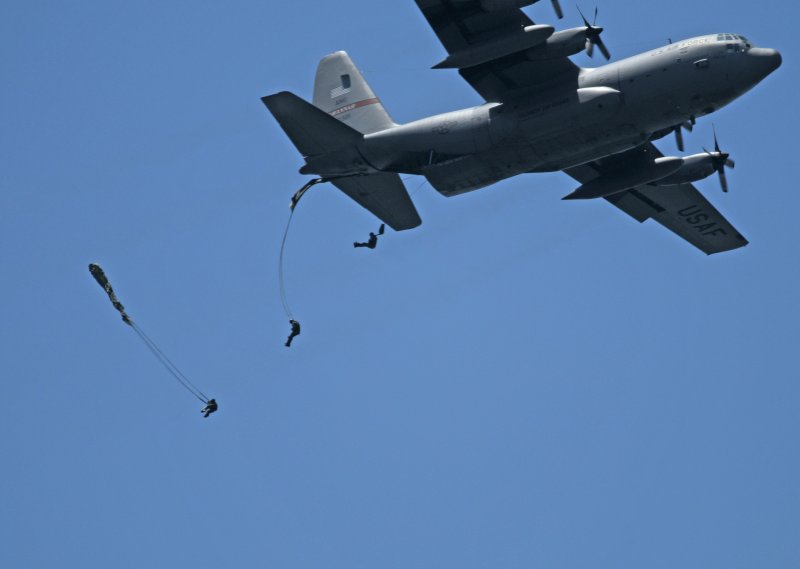By SEAN MURPHY
AP
May 25, 2023

Amryn Tom reacts after graduating from Cedar City High School on Wednesday, May 25, 2022, in Cedar City, Utah. Tom is wearing an eagle feather given to her by her mother and a cap that a family friend beaded. (AP Photo/Rick Bowmer, File)
OKLAHOMA CITY (AP) — The Oklahoma Legislature on Thursday overrode Gov. Kevin Stitt’s veto of a bill that would allow students to wear Native American regalia during high school and college graduations.
The state House and Senate easily cleared the two-thirds threshold needed to uphold the measure, which takes effect July 1 and had strong support from many Oklahoma-based tribes and Native American citizens.
It would allow any student at a public school, including colleges, universities and technology centers, to wear tribal regalia such as traditional garments, jewelry or other adornments during official graduation ceremonies. Weapons such as a bow and arrow, tomahawk or war hammer are specifically prohibited.
Stitt, a Cherokee Nation citizen who has feuded with many Oklahoma-based Native American tribes throughout his two terms in office, vetoed the bill earlier this month, saying at the time that the decision should be up to individual districts.
“In other words, if schools want to allow their students to wear tribal regalia at graduation, good on them,” Stitt wrote in his veto message. “But if schools prefer for their students to wear only traditional cap and gown, the Legislature shouldn’t stand in their way.”
Stitt also suggested the bill would allow other groups to “demand special favor to wear whatever they please at a formal ceremony.”
Lawmakers also overrode vetoes of several other measures, including one adding experts on Native American health to a wellness council and another allowing for the existence of the Oklahoma Educational Television Authority, the state’s Public Broadcasting Service affiliate.
Cherokee Nation Principal Chief Chuck Hoskin Jr. thanked the Legislature on Thursday.
“I hope Governor Stitt hears the message that his blanket hostility to tribes is a dead end,” Hoskin said in a statement. “The majority of Oklahomans believe in respecting the rights of Native Americans and working together with the sovereign tribes who share this land.”
Kamryn Yanchick, a citizen of the Seminole Nation of Oklahoma, was denied the opportunity to wear a decorated cap with a beaded pattern when she graduated from her high school in 2018.
Being able to “unapologetically express yourself and take pride in your culture at a celebration without having to ask a non-Native person for permission to do so is really significant,” said Yanchick, who is now a Native American policy advocate.
A Native American former student sued Broken Arrow Public Schools and two employees earlier this month after she was forced to remove an eagle feather from her graduation cap prior to her high school commencement ceremony.

Amryn Tom reacts after graduating from Cedar City High School on Wednesday, May 25, 2022, in Cedar City, Utah. Tom is wearing an eagle feather given to her by her mother and a cap that a family friend beaded. (AP Photo/Rick Bowmer, File)
OKLAHOMA CITY (AP) — The Oklahoma Legislature on Thursday overrode Gov. Kevin Stitt’s veto of a bill that would allow students to wear Native American regalia during high school and college graduations.
The state House and Senate easily cleared the two-thirds threshold needed to uphold the measure, which takes effect July 1 and had strong support from many Oklahoma-based tribes and Native American citizens.
It would allow any student at a public school, including colleges, universities and technology centers, to wear tribal regalia such as traditional garments, jewelry or other adornments during official graduation ceremonies. Weapons such as a bow and arrow, tomahawk or war hammer are specifically prohibited.
Stitt, a Cherokee Nation citizen who has feuded with many Oklahoma-based Native American tribes throughout his two terms in office, vetoed the bill earlier this month, saying at the time that the decision should be up to individual districts.
“In other words, if schools want to allow their students to wear tribal regalia at graduation, good on them,” Stitt wrote in his veto message. “But if schools prefer for their students to wear only traditional cap and gown, the Legislature shouldn’t stand in their way.”
Stitt also suggested the bill would allow other groups to “demand special favor to wear whatever they please at a formal ceremony.”
Lawmakers also overrode vetoes of several other measures, including one adding experts on Native American health to a wellness council and another allowing for the existence of the Oklahoma Educational Television Authority, the state’s Public Broadcasting Service affiliate.
Cherokee Nation Principal Chief Chuck Hoskin Jr. thanked the Legislature on Thursday.
“I hope Governor Stitt hears the message that his blanket hostility to tribes is a dead end,” Hoskin said in a statement. “The majority of Oklahomans believe in respecting the rights of Native Americans and working together with the sovereign tribes who share this land.”
Kamryn Yanchick, a citizen of the Seminole Nation of Oklahoma, was denied the opportunity to wear a decorated cap with a beaded pattern when she graduated from her high school in 2018.
Being able to “unapologetically express yourself and take pride in your culture at a celebration without having to ask a non-Native person for permission to do so is really significant,” said Yanchick, who is now a Native American policy advocate.
A Native American former student sued Broken Arrow Public Schools and two employees earlier this month after she was forced to remove an eagle feather from her graduation cap prior to her high school commencement ceremony.








